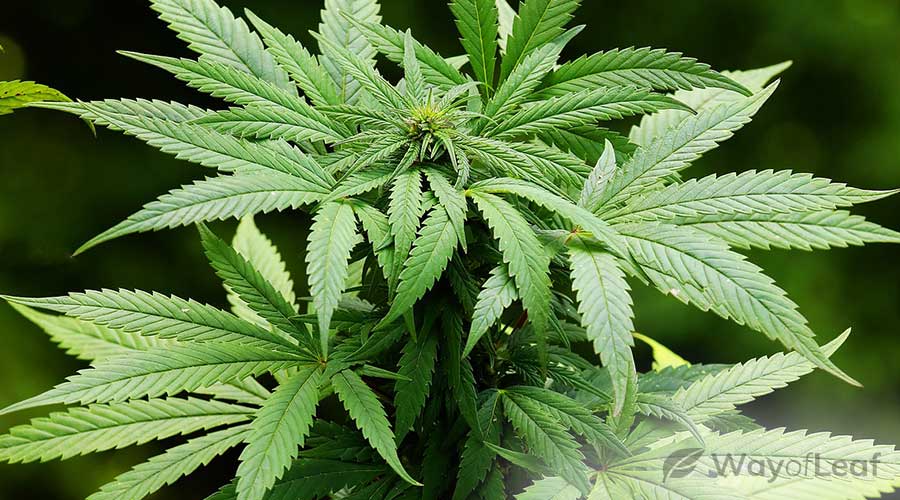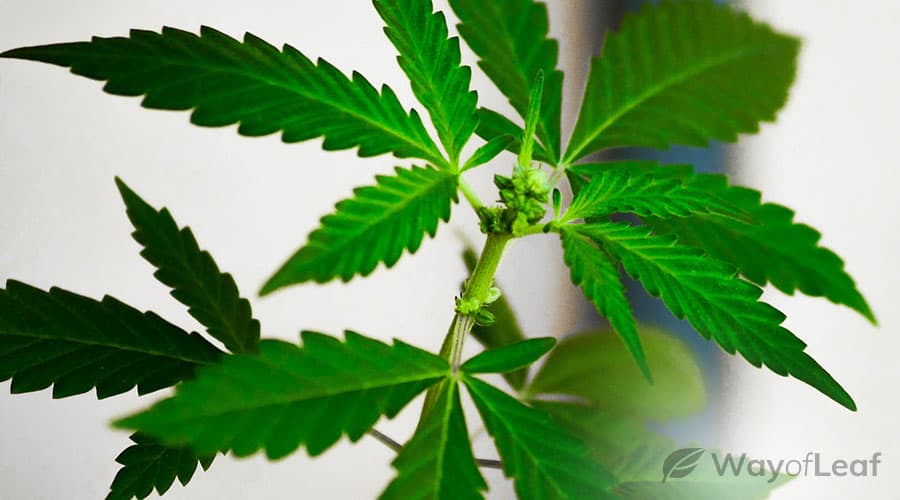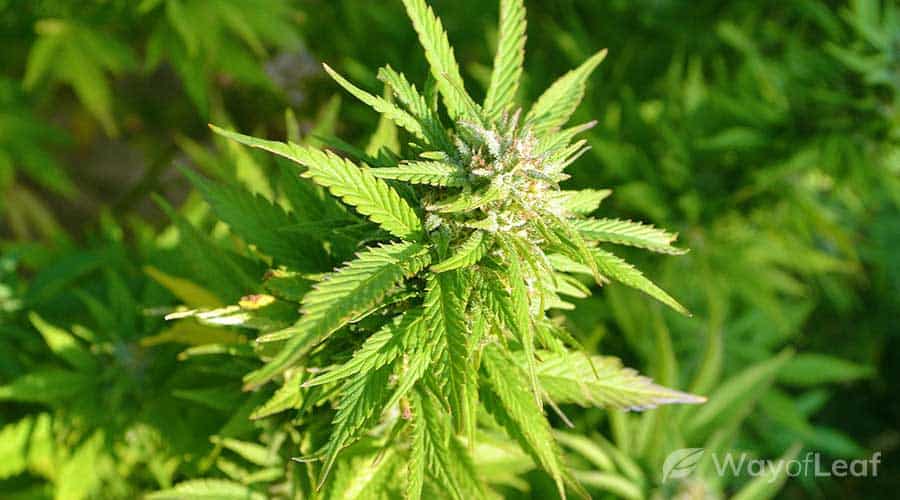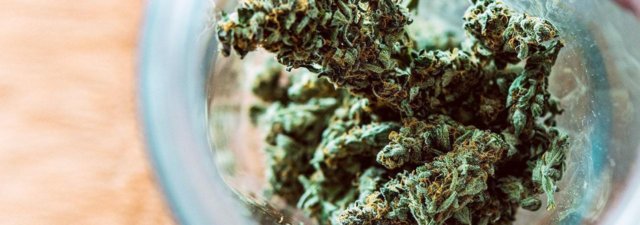When growing your favorite marijuana strain, it’s well-advised you follow the advice of experts. The steps and tips they offer can be the difference between complete failure and glorious, trichome-coated success.
Unfortunately, the bad news is that even for experienced growers, the Jack Herer strain is a pretty big challenge. In other words, it can be notoriously difficult to grow.
The strain is named after legendary marijuana activist Jack Herer, best known for his book The Emperor Wears No Clothes. In it, he illustrates the ludicrousness of cannabis prohibition and outlines the many uses of hemp. The book has inspired many other activists, including cannabis kingpins like Ed Rosenthal and Steve DeAngelo.
Dutch cannabis breeders developed this classic hybrid in the Netherlands in 1994. Subsequently, Dutch pharmacies distributed Jack Herer as a medical-grade strain. Genetically, it is a cross of indica Northern Lights#5, Shiva Skunk, and a sativa Haze hybrid.
The Jack Herer strain can contain up to 24% THC, as well up to 2.2% CBG, which is rare.
Jack Herer is a unique strain with seven High Times Cannabis Cup awards. It is a slightly sativa-dominant hybrid, and its THC content can reach 24%; therefore, it might be too potent for new users.
The Jack Herer strain offers a vivid and uplifting, euphoric high, but one that should not overpower experienced users. The cerebral effects, coupled with the energy boost, mean that you won’t become couch-locked. It also contains up to 2.2% of the cannabinoid CBG, which is rare in marijuana strains. Jack Herer tends to be used for medicinal purposes, especially for people suffering from migraines, PTSD, or depression.
In this growing guide for Jack Herer, we outline eight tips for honoring the memory of a legend.
Growing Jack Herer Tip #1 – Try a 12/12 Lighting Schedule
Although we don’t necessarily recommend this tip, thousands of growers have used it effectively. Typically, it is best to get as much light as possible during the vegetative stage. Many growers try to get 18 hours of light a day. However, some expose their marijuana plants to 24 hours of light. When the plant is ready for flowering, growers typically switch to a 12/12 lighting schedule.
When you grow the Jack Herer strain correctly, these plants can be huge! We’re talking ‘too big to fit in an indoor grow room’ here. If indoor space is tight, restrict your plants to a two-week vegetative stage and go straight to flowering. It is not something you would normally do, but it IS a viable way to grow Jack Herer from seed.

Remember, most sativas are equatorial, which means they are rarely exposed to more than 12 hours of daylight. With a 12/12 schedule, the Jack Herer plants will develop an enormous central cola and minimal side branching. Bear in mind that approximately 85% of the plant’s weight is in the main cola, and side branches produce tiny buds.
If you grow Jack Herer in this manner, its open structure will enable the lower branches to produce nice buds. Admittedly, you will end up with lower yields and smaller plants. However, when you remove the vegetative stage, you benefit from more annual harvests.
Growing Jack Herer Tip #2 – Remember, Yield Varies Depending on the Phenotype
Jack Herer offers different yields depending on the phenotype, and this is a strain with numerous phenotypes. While sativa-dominant is the most common phenotype, there are also indica-dominant versions available. You will experience greater yields with indica phenotypes because its sativa counterpart usually only offers low to moderate yields.
When grown indoors, you can get up to 18 ounces per square meter planted. Outdoors, you could get up to 18 ounces a plant, and it should be ready for harvest in late September.
We spoke to a grower who outlined his yields when using the 12/12 lighting schedule from the very beginning.

He grew five plants and ended up with 14 ounces. The biggest issue was the difference in yield size between plants, which was enormous due to the different phenotypes used. While the poorest performing plant offered a little above two ounces, the largest one offered four ounces.
At one point during the cycle, he could not feed the plants properly, which undoubtedly affected yield. At this stage, the problem of Jack Herer growing too fast also reared its head. The plants sped towards the lights and were stressed as a result. The plants also blocked the fan’s airflow, so we would expect better yields overall when growers tend to Jack Herer constantly.
Growing Jack Herer Tip #3 – Don’t Underestimate Flowering Time
Jack Herer’s flowering time is 8–9 weeks on average, but it can be significantly longer in some cases. The first two weeks are crucial because it can take more time than expected for your plants to begin growing. As mentioned, growers can finish the vegetative stage as soon as they’re ready to change the light schedule. Just give the plants two weeks in the vegetative stage and get ready to force them into flowering.
Once your Jack Herer plants get their pre-flowers, they can reach 16 inches within a couple of weeks. At this delicate stage, make sure you are checking the lighting every day because these plants grow once they get moving! By the third week of flowering, you may need to remove some branches on the lower nodes to ensure lower buds get enough light.
The Jack Herer strain grows quickly; some plants can reach 16 inches within a few weeks.
By the time the flowers are growing, the plants could be three feet tall. It is also possible that one of your plants will grow much faster than the others. If this happens, super-crop it to even up the canopy. By the middle of the flowering stage, it is probably a good idea to upgrade your lighting.
During the last few weeks, the plants will start growing out and producing plump, hard, and large buds. Most Jack Herer plants grow to four feet indoors. As always, wait until at least 70% of the pistils change color before harvesting.
Growing Jack Herer Tip #4 – Consider Side Lighting for Your Jack Herer Grow
So, you’ve decided to grow Jack Herer using a 12/12 lighting schedule. However, you’re concerned about the possibility of only producing a low yield. Then, consider adding side lighting when growing Jack Herer indoors. As you can probably guess, it involves lighting the sides of the crop rather than the top. In theory, it should work well because marijuana plants have a triangular shape when grown outdoors because of how natural light exposure works.
The sun rises low on the horizon, beams directly down at around midday, and drops away again. The problem is that side lighting assumes that weeds grown indoors will react in the same manner. In reality, natural selection is extremely versatile.
Cannabis is programmed to ‘die’ once it has finished its duty. In this case, success is when a female plant is pollinated, develops seeds, and propagates. When it isn’t pollinated, it gets sexually stressed, which results in fatter buds.

As you probably know, female weed plants shoot their flowers as high as possible to boost the chances of pollination. The top and outer buds receive preference. Training techniques such as topping help produce two main colas. Therefore, if you only use side lighting, your Jack Herer plants will have large and fat top colas, while the interior and lower buds will remain small. That’s how cannabis grows, and side lighting doesn’t alter this behavior.
If you add side lighting to your regular lighting, you could benefit from a 20% increase in your yield. However, you have to be in complete control of your growing environment for side lighting to be effective. It is also worth trying training techniques rather than opting for side lighting.
Growing Jack Herer Tip #5 –Training Techniques
Training techniques aim to maximize horizontal growth and break the main stem dominance to ensure more buds receive light. When done correctly, these techniques can result in even bushier Jack Herer plants with more colas. Here is a quick overview of three such training techniques:
TRAIN YOUR JACK HERER CROP FOR ULTIMATE YIELDS
| NAME | TECHNIQUE |
|---|---|
| Low-Stress Training (LST) | Bend the shoots outward and away from the plant’s main stem. Most growers choose to bend their plants into a cannabis bush, although experienced cultivators like to get creative. |
| Screen of Green (SCROG) | You add a screen close to your lights and train the tops of the plants to increase the number of buds that are exposed to light. Typically, you add 30 cm of screen for every plant. Once your plants grow through the screen, pull them back down and tie their branches to the screen. You can also remove large fan leaves to ensure your buds receive more energy. |
| Topping | This is the process of pruning the main stem’s growing tip. This is a high-stress training (HST) method. When you remove the terminal bud, you boost the growth of two new colas and also increase the growth of branches lower down on the plant. Make sure you use clean scissors to perform the cut of the main stem’s tip. |
Growing Jack Herer Tip #6 – The Best Nutrients for Feeding
Fertilizers have a standard N-P-K reading on the front of the packaging. It tells you the ratio of nitrogen (N), phosphorus (P), and potassium (K). Typically, marijuana plants need more nitrogen during the vegetative stage and more of the other two nutrients when flowering.
Jack Herer is a little different because it isn’t a ‘leafy’ plant. As a result, it needs less nitrogen than other plants overall. A fertilizer with a 3-3-5 ratio works well as the buds get bigger. Overall, however, there isn’t a strain-specific nutrient when growing any marijuana plant. It is simply a case of requiring more or fewer nutrients for optimal growth.
It is a mistake to neglect other vital nutrients such as sulfur (S), calcium (Ca), and magnesium (Mg). Very few growers, especially first-timers, ever have to worry about nutrient deficiency. Nutrient burn, on the other hand (the process of providing plants with too many nutrients), is a significant problem. When you purchase fertilizer, use as little as 25% of the recommended dosage and work your way up.
Growing Jack Herer Tip #7 – Flowering Outdoors
As we mentioned above, Jack Herer is a monster when grown outdoors. It becomes enormous when it isn’t confined to an indoor grow room. The main issue is finding the right growing conditions. For the record, Jack Herer prefers to grow in a moderate climate with temperatures between 70 and 85 degrees Fahrenheit.
If you live in optimal outdoor conditions, you don’t have to provide the same level of input compared to growing Jack Herer indoors. You can expect your Jack Herer plant to begin adjusting to daylight changes as nature intended. Ultimately, they should be able to flower by themselves. As the days become shorter, the plants are exposed to enough darkness to switch into the flowering stage.
You can use a polyethylene sheet to block out sunlight or even build a screen if you need outdoor plants to flower quickly.
Of course, if you have the patience, you can support as much vegetative growth as possible. However, you have to be careful because your plants will not thrive when the weather gets colder.
Here’s a tip if you need your plants to flower outdoors quickly. You can use a polyethylene sheet to block out sunlight or even build a screen. Remember, your plants need 12 hours of continuous darkness for 1-2 weeks to enter flowering mode.
Growing Jack Herer Tip #8 – Keeping Pests at Bay the Natural Way
Although indoor growers are not immune to the issues caused by pests, outdoor growers need to be more vigilant. No one wants to spray their plants with pesticides. Fortunately, there are innovative ways to ensure pests don’t ruin your crop without adding chemicals to the equation.
Option #1 Introduce Natural Predators
Aphids, spider mites, mealybugs, and whiteflies are just some of the insects that can destroy all your hard work. One way to solve the issue is to introduce natural predators that can handle the pests on your behalf.
Ladybugs are great because they either kill or repel many pests and don’t feast on marijuana plants. Introduce a few into your garden and marvel at their effectiveness. They are especially useful if you have issues with spider mites.

Option #2 Grow Companion Plants
If you don’t like the idea of adding more creatures to your garden, why not try companion planting instead? Several plants act as pest repellents; you need to plant them close to your weed plants. For instance, garlic cloves keep potato bugs, beetles, spider mites, and aphids at bay. Occasionally, animals such as deer and rabbits will arrive to munch on your plants, but guess what? They also hate garlic!
Flea beetles are a major problem for some growers. To combat this issue, introduce a hint of mint! As well as providing a gorgeous and refreshing scent, mint does a fantastic job of repelling flea beetles, a host of other insects, and mice.
DID YOU KNOW: Planting garlic cloves next to your Jack Herer crop can help keep potato bugs, beetles, spider mites, and aphids at bay.
If you love flowers, plant some marigolds and geraniums in your cannabis garden. Some growers place geraniums in pots to make their lives a lot easier. One of the benefits of marigolds is their speed of growth. You can plant them in the soil, and within days, they can produce a strong scent that keeps pests away. However, one of our readers commented that marigolds can attract spider mites, so bear this in mind.
We hope you enjoyed this guide and that all of the tips prove helpful if and when you elect to grow Jack Herer. Have any input or firsthand experience with growing Jack Herer? Make sure to comment below!



![8 Tips for Growing G13 Marijuana [Grower’s Guide]](https://wayofleaf.com/wp-content/uploads/2019/01/mj_growing-g13-marijuana-640x225.jpg)

![Why Does Cannabis Turn Purple [Myths and Facts]](https://wayofleaf.com/wp-content/uploads/2018/11/wol-banner-why-does-cannabis-turn-purple-640x225.jpg)
![What Is a Feed Chart? [Learning to Grow Marijuana 101]](https://wayofleaf.com/wp-content/uploads/2018/11/mj_what-is-a-feed-chart-growing-cannabis-640x225.jpg)


![How Long Can You Store Weed Before It Gets Moldy? [Answered]](https://wayofleaf.com/wp-content/uploads/2019/01/wol_weed-gets-moldy-640x225.jpg)

![5 Ingenious Ways to Use Marijuana Trim [Don’t Let It Go to Waste]](https://wayofleaf.com/wp-content/uploads/2020/06/wol_5_ingenious_ways_to_use_marijuana_trim_1920x450-640x225.jpg)
